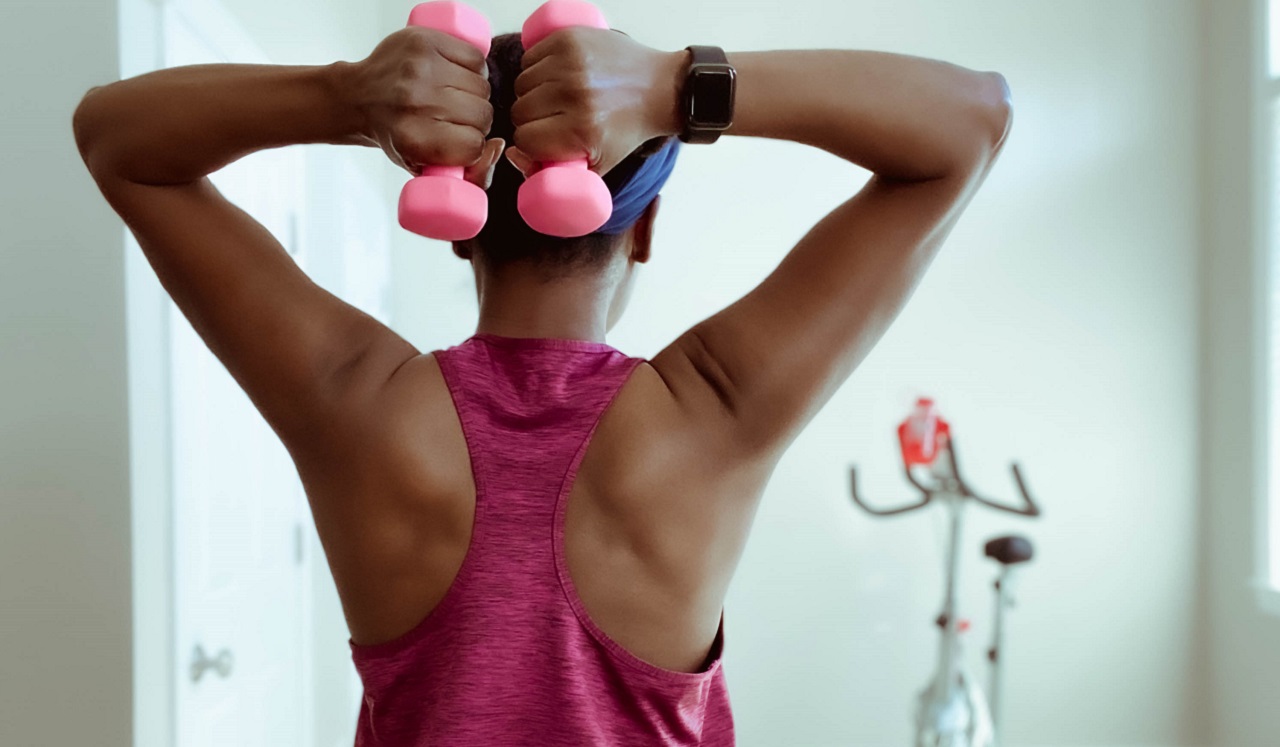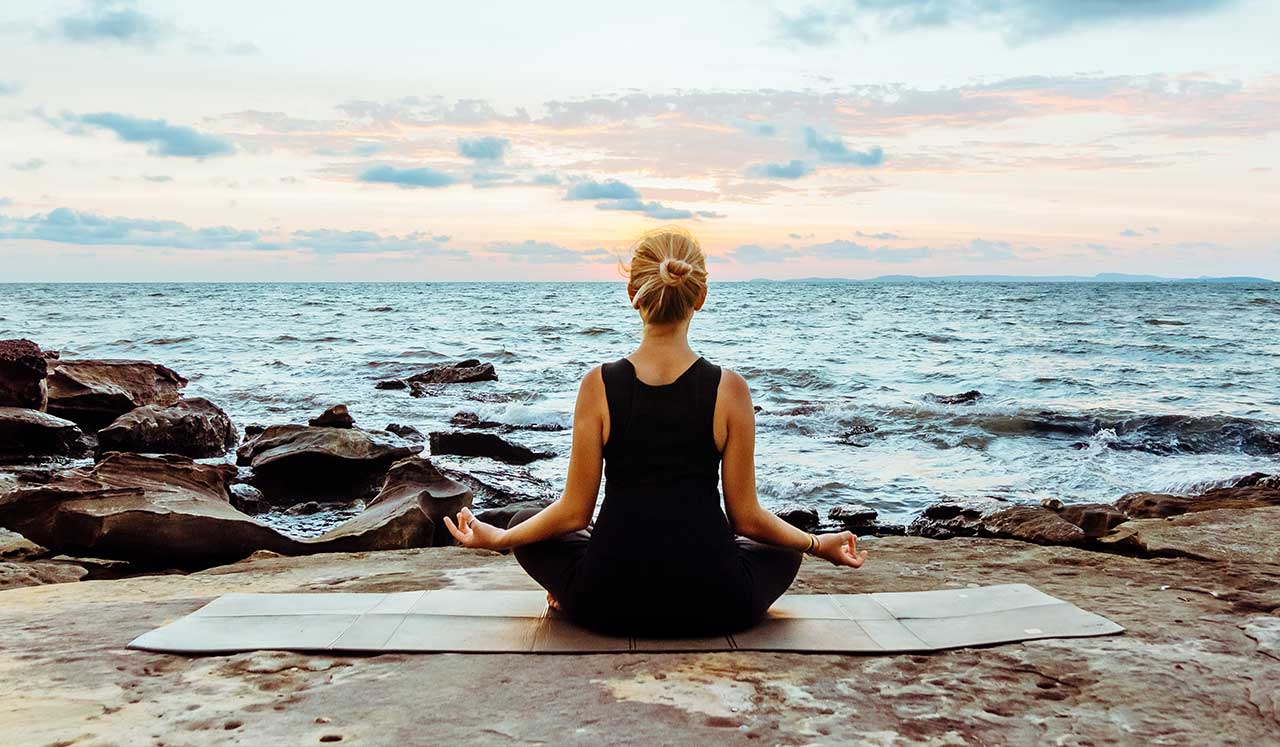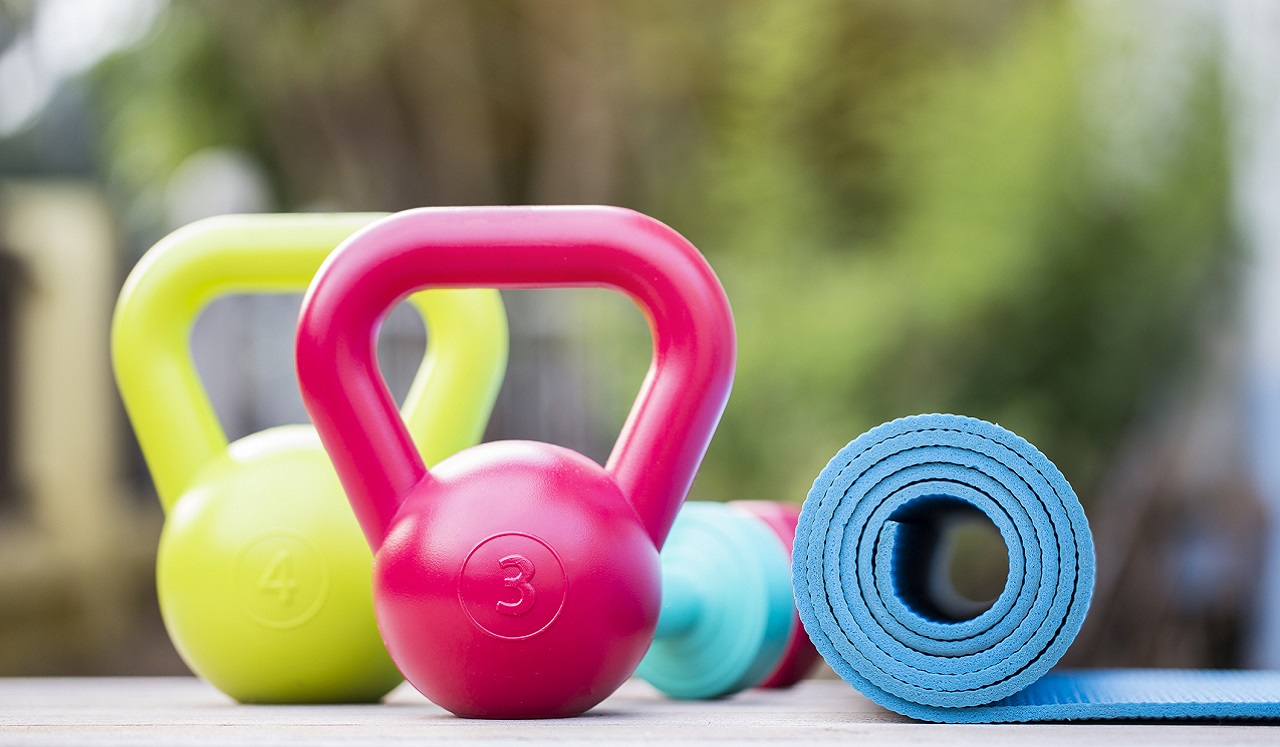Just because COVID-19 fears made you break up with your trainer or gym doesn’t mean you need to forsake fitness. Work out your way—and where you want: like the great indoors of your home.
Exercise options may seem endless and costly, but you can weed them out with a week or two of research, says Karly Mendez, human performance specialist at Memorial Hermann | Rockets Sports Medicine Institute.
She recommends sampling a variety of free classes on YouTube or via weeklong passes at a gym where you can try out different styles of workouts and see what you like.
“Try a workout for at least 2 weeks so you find what suits your lifestyle and fitness level,” she says. “You don’t want to build a bad relationship with a routine after investing in classes or equipment.”
Get cleared by your physician before starting a new routine if you have chronic health issues such as hypertension, diabetes, arthritis or other medical conditions.
Stationary Bike
Body benefits: You burn calories and activate your core while building endurance and lean muscle mass.
Limits: None.
Equipment: You’ll need a bike. If taking a live or online class on YouTube, you’ll need a TV or iPad and possibly clip-in shoes.
Form: Protect your knees and back by adjusting the seat to be at the top of your hips when standing next to the bike. Pedals should be at a distance where your extended knee (the foot closest to the ground) is slightly bent.
Newbies: Start with 10-15 minutes at a low resistance (how easy or difficult the pedals are to turn), three times per week.
Build up: Every three or four sessions, add 10-15 minutes to your time and raise your resistance level.
Break up: Listen to your body, not just instructors. Don’t stand up and down or pump arms if your knees or shoulders hurt.
Pilates/Barre
Body benefits: These graceful exercises build strength and endurance while burning calories through high repetitions of small and precise movements. You also gain flexibility and coordination while toning muscles.
Limits: Rest 2 days a week.
Equipment: A yoga mat, dumbbells, resistance bands and barre or chair (without wheels).
Form: “Really pay attention to your form,” Mendez says. “Your core is your powerhouse, so keeping your core tight throughout all the movements will help with stabilization and balance to get you through the movements.”
Newbies: Start with three-pound dumbbells, full water bottles or bands with a lower resistance level.
Build up: Move up to a moderate resistance, eventually graduating to a high-resistance band. “When it starts to get easy, that’s when to go to the next level,” Mendez says. If you can perform 10-15 repetitions without stopping, progress to higher weights, from three to five, eight, 12 and 15 pounds.
Break up: Listen to your body and how it feels.
Walking/Running
Body benefits: You build lean muscle while burning body fat and increasing endurance.
Limits: Walk rather than run if you have knee issues. You can walk daily but take a day of rest between runs.
Equipment: Treadmill, sidewalk or trail, and supportive sneakers.
Form: Contract your core, with your chest up, slight hinge at the hips and arms moving like pistons, with a 90-degree angle at the elbow, and hands relaxed. “Form is always important,” says Mendez.
Newbies: Walk at a pace where you can converse, 3 days a week, with two walks of 20-30 minutes and a third 40-minute walk or run.
Build up: Pick up your pace and extend your time when you’re comfortable at your current pace. If you’re walking, increase your time by 10 minutes per walk.
Break up: Only run if you’re pain-free and have no cardiovascular risks, such as hypertension, unless you’ve been cleared by your doctor.
Strength Training
Body benefits: You build and tone muscles and endurance while raising your heart rate and burning calories and body fat.
Limits: You should take a day or two of rest between strength workouts.
Equipment: Three-, five-, eight-, 10-, 12- and 15-pound weights. You also can use resistance bands, starting with a lower resistance and building up. Determine what weights or resistance works for you during your free gym sessions or trial videos. Some workouts use medicine balls.
Form: Squeeze your abs throughout all exercises. “If you’re unsure you’re using proper form, work out in front of a mirror so you can see how your body is moving,” says Mendez. Also move weights slowly rather than slinging them. If you cannot follow the instructor’s form, you need to use lower weights. Rest at least one minute between each set of 10 to 15 repetitions. Begin your session with five minutes of warmup, walking, running or climbing stairs. Stretch your muscles when your workout is done.
Newbies: You may need lower or higher weights depending on the exercise. Work out no longer than 45 minutes and stretch your muscles afterward.
Build up: When an exercise seems easy, progress to heavier weights or higher repetitions.
Break up: Stop any move or exercise that causes pain. If you remain in pain for more than a week, check with your doctor.


